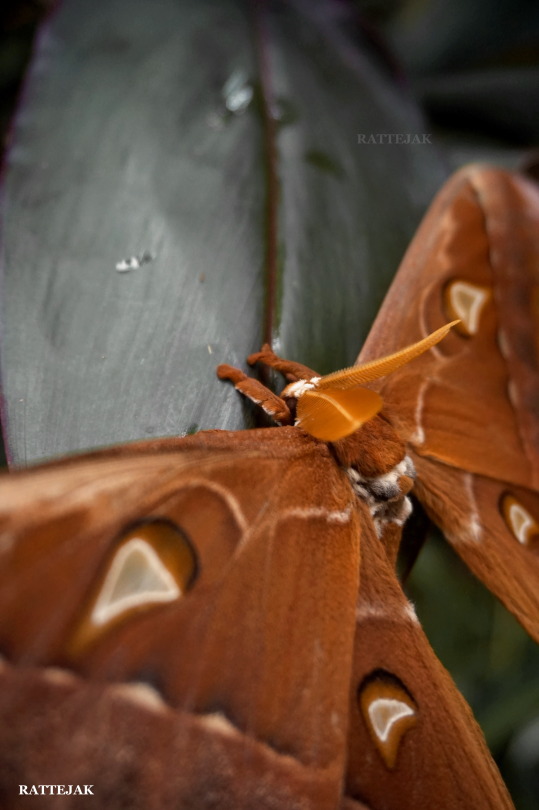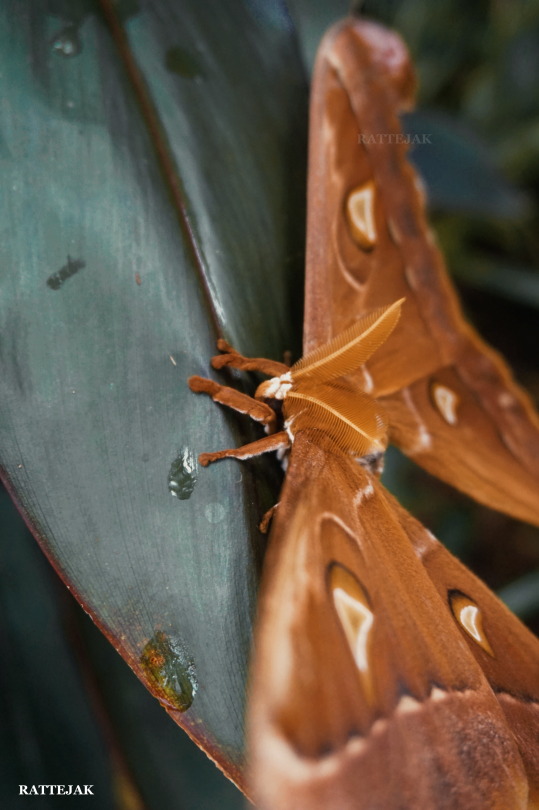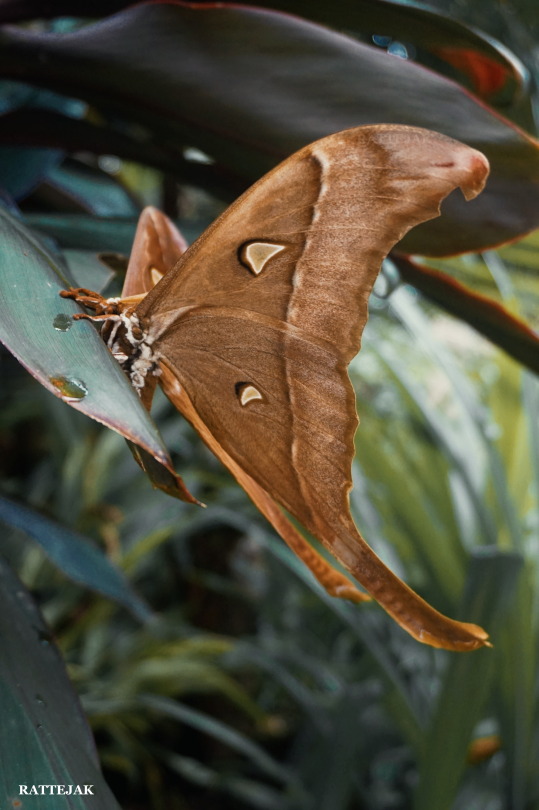#Saturniinae
Explore tagged Tumblr posts
Text

#IFTTT#Flickr#loepa#lampei#animalia#animals#arthropoda#arthropods#hexapoda#hexapods#insecta#insects#pterygota#winged#oncewinged#lepidoptera#butterflies#moths#bombycoidea#saturniidae#emperor#giant#silk#saturniinae#saturniini#insect#moth#animal#wild#wildlife
185 notes
·
View notes
Text

this huge Polyphemus Moth caterpillar! (Antheraea polyphemus)
for a bit of simple joy rn, reblog this post with a cool bug you've seen recently
ill go first. heres mine: a parasitoid wasp in the genus Torymus

#insect#insects#invertebrate#invertebrates#arthropod#arthropods#lepidoptera#lepidopteran#moth#moths#Antheraea polyphemus#Antheraea#Saturniini#Saturniinae#Saturniidae#Bombycoidea#Pterygota#Insecta#Hexapoda#Arthropoda#Animalia#tag bomb ^^^
280 notes
·
View notes
Text
@thedogmanofalcatraz submitted: This lovely lady was perched on my building last October! We're both residents of Southern Alberta, and I'm pretty sure she's a silk moth! I'd love some confirmation though, if you please! She's got some gorgeous little black stripes on her front legs, but I didn't want to get too close and bother her. :)


Ohhhhhh a perfect angel. She is not a silk moth! If you mean a domesticated silkmoth, then that would not be found in the wild (because they are a domesticated species), and wild silkmoths (in the same genus as domesticated silkmoths) are brown and found in Asia. Giant silk moths in the subfamily Saturniinae are found all over the world including Alberta, but they are larger than this and as far as I know, none of them are pure white.
This sweet lil fella is actually a tiger moth, either in the genus Spilosoma (likely a Virginian tiger moth) or a fall webworm moth, but I’d need a better look at it to say for sure, since they have different colored abdomens hidden under their wings :)
207 notes
·
View notes
Text

Mothtober Day 10: Emperor Moth
Image ID: Emperor moth drawn on lined paper colored with color pencils
2 notes
·
View notes
Note
I'm down for character designs. I expect symbolism (possibly pictures if at all possible)
Tell me which moth/moths u chose and why. Please n thank u
Oh I have so much symbolism, but the moths.
So when deciding on a moth species to have Drury spliced with, originally I wanted to pick a moth from the family Bombycidae, also called silkworm moths, but after a lot of consideration I leaned a bit closer to Saturniidae, particularly the subfamily Saturniinae, also called giant silkmoths.
Drury's always been pretty heavily associated with giant silkmoths in my work. My choice for his birthplace and heritage are directly linked to one of the largest moths on Earth: the Atlas Moth.
That said, when deciding the moth species in specific, I wanted to pick a species first documented by one of his namesakes, either Dru Drury or Francis Walker. As a result, I settled on Samia cynthia, also called the ailanthus silkmoth, which was documented by Dru Drury in 1773.

a lot of his tattoos include moths too, including moon moths, imperial moths, and of course giant silkmoths.
4 notes
·
View notes
Note
What is your favorite insect and why would Gorrik dislike it
Ah I have so many favorite insects!!!! So I love cockroaches sm and I don't think Gorrik could disagree with that because they're perfect and cannot be honestly disliked by any entomology enthusiast (... entothusiast)
Mmmm but I also really like members of the saturniinae (giant silk moth) subfamily and as adults they don't (and can't) eat and live for avg 5-12 days after emergence from the pupa. I think this makes it a questionable favorite insect choice, because they really just live to fuck nasty and starve to death
1 note
·
View note
Note
What’s your favorite insect?
Oh, the Luna moth! Scientific name Actias luna, also called the American moon moth. A Nearctic moth in the family Saturniidae, subfamily Saturniinae, a group commonly named the giant silk moths.The moth has lime-green wings and a white body. Its caterpillars are also green. Its typical wingspan is roug-
#kinger#I copied and pasted this from Wikipedia lmao 😭😭#[in character]#ask blog#ask#ask me anything#kinger my beloved
1 note
·
View note
Text
BUG OF THE DAY #2:
Luna Moth


Actias luna, known as the luna moth, also known as the American moon moth, is a Nearctic moth in the family Saturniidae, subfamily Saturniinae, a group commonly named the giant silk moths. The Luna moth can be found in North America from Florida to Maine in the United States (east of the Great Plains), and from Saskatchewan in Canada (east through central Quebec to Nova Scotia). Additionally, vagrant luna moths are hardly observed in Western Europe.
Source(s):
And the article's respective sources.
1 note
·
View note
Note
Troll/Human hybrids, you say?

Her name is Saturn Lalonde-Maryam (after Saturniinae) and nobody knows what her blood color is because of her being a hybrid.
what is astonishing to me about the entire yiffy "plot" is how it went out of its way to destroy one of the only few things people liked about the epilogues? rose and kanaya were happily married with a daughter? nope, rose has a disgusting dog penis fetish and a secret dog fetish child and she was actually neglecting the daughter people cared about this entire time for the writers weird zoophilia fetish!
If it's WhatPumpkin's way to villainize Jade or to make RoseJade happen, this is the absolute worst way to do it. It didn't help that the old WhatPumpkin team were not huge fans of Rosemary. They like Rose and Kanaya as lesbians, but not them being together together even after the base webcomic has ended. I'm still more upset that they didn't go for a half human half troll fankid for Rosemary's child. They just had to ADOPT one that just HAPPEN to look like Vriska. Because Kanaya adopting someone that looks like your ex-crush is totally healthy. They have ectobiology too, so they CAN make it happen. If they couldn't, I would have been fine with just a quick and small explanation how human and troll DNA could never be compatible even with all the high tech that trolls had made. Though that probably would not stop me joking about how Earth C hates hybrid freaks lol Carapacian x Human romance is forbidden! You can only marry the same species!
32 notes
·
View notes
Photo




What a gorgeous creature. I can’t imagine how fat the caterpillars must be.
Coscinocera hercules
24/04/21
#Coscinocera hercules#Hercules Moth#Coscinocera#Attacini#Saturniinae#Saturniidae#Bombycoidea#Lepidoptera#lepidopterophobia#lepidopterology#Entomology#nature aesthetic#nature#moths#mothblr#moths tw#moth#mothcore#tropical#tropical aesthetic#bugs#bugblr#bugs tw#bug#insect#insects#insecta#insects tw#insectblr#emperor moths
110 notes
·
View notes
Text

#IFTTT#Flickr#loepa#lampei#animalia#animals#arthropoda#arthropods#hexapoda#hexapods#insecta#insects#pterygota#winged#oncewinged#lepidoptera#butterflies#moths#bombycoidea#saturniidae#emperor#giant#silk#saturniinae#saturniini#insect#moth#animal#wild#wildlife
13 notes
·
View notes
Photo

Had this little oakworm less than a day and it burrowed. @khamubro spotted him in a parking lot and brought it home for me to raise. Can't wait to see if it's a bright big yellow female or a rusty yellow male! #orangestripedoakworm #saturniinae #Lepidoptera #moth #entomology #caterpillar #caterpillarsofinstagram #buggirl #insects #larvae #larva #larval #blackcaterpillar #oakwormcaterpillar #caterpillaridentification #stripedcaterpillar #horned #horns #hornedcaterpillar #bugs #southcarolinainsects #ninetysixsc #yellowstripedoakworm #oakworm #yellowmoth #spikeycaterpillar #caterpıllar #animals #nature #🦋 (at Pixieland Farm) https://www.instagram.com/p/CTRH1yMLXSX/?utm_medium=tumblr
#orangestripedoakworm#saturniinae#lepidoptera#moth#entomology#caterpillar#caterpillarsofinstagram#buggirl#insects#larvae#larva#larval#blackcaterpillar#oakwormcaterpillar#caterpillaridentification#stripedcaterpillar#horned#horns#hornedcaterpillar#bugs#southcarolinainsects#ninetysixsc#yellowstripedoakworm#oakworm#yellowmoth#spikeycaterpillar#caterpıllar#animals#nature#🦋
3 notes
·
View notes
Text
No common name, family Erebidae subfamily Lymantriinae (tussock moths), Euproctis plagiata
Injured emperor moth, family Saturniidae subfamily Saturniinae, Bunaeopsis arabella
Rose-myrtle lappet moth (male), family Lasiocampidae, Trabala vishnou
No common name, family Thyrididae (picture-winged leaf moths) subfamily Siculodinae, Belonoptera selenioides
Moth unknown, family Uraniidae (swallowtail moths) subfamily Epipleminae, genus Epiplema
Japanese owl moth, family Brahmaeidae subfamily Brahmaeinae, Brahmaea japonica
White plume moth, family Pterophoridae, Pterophorus pentadactyla
Common ghost moth (female), family Hepialidae, Hepialus humuli
Pink spirit moth (male), family Saturniidae, Actias rhodopneuma
Burnished brass moth, family Noctuidae, Diachrysia chrysitis
Moths
Moths with fluffy feet.

Moths with lines.

Moths with hindwings that stick out.

Moths that look like leaves.

Moths that look like Ts.

Moths that have been written on in an ancient alien language.

Moths that resemble tiny angels.

Moths that feel like sunset.

Moths with long tails.

Metallic moths for the magpie's hoard.

Just moths. Yeah u get me.
22 notes
·
View notes
Photo


Beautiful polyphemus moth that came to my porch window a week or so ago. First one I’d seen in ages.
#polyphemus moth#moth#antheraea polyphemus#insects#Saturniinae#I turned off the lights after I spotted them so as to not disrupt them too much
12 notes
·
View notes
Photo

Lovely luna moth at the Neosho National Fish Hatchery (via USFWS Midwest Region)
Photo by Bruce Hallman/USFWS.
#Luna Moth#Actias luna#Actias#Saturniini#Saturniinae#Saturniidae#Bombycoidea#Lepidoptera#Insecta#Hexapoda#Arthropoda#moth#insects#Missouri
41 notes
·
View notes
Photo

Hyalophora cecropia / Cecropia Moth (7767) decided to eclose today.
#hyalophora cecropia#cecropia moth#Hodges7767#lepidoptera#moth#bombycoidea#saturniidae#saturniinae#attacini#new jersey#middlesex county#insect#photographers on tumblr#original photographers
348 notes
·
View notes